How I Create a No Dig Lasagna Garden
Years ago, I tried my hand at creating a no dig lasagna garden using something called sheet mulching. It’s become top of mind again, now that we’ve moved to a new home and want to start a new vegetable garden here.
Turns out that making a lasagna garden has nothing to do with cooking an Italian pasta dish. On the other hand, it has everything to do with setting up a new place to put plants without killing your back.
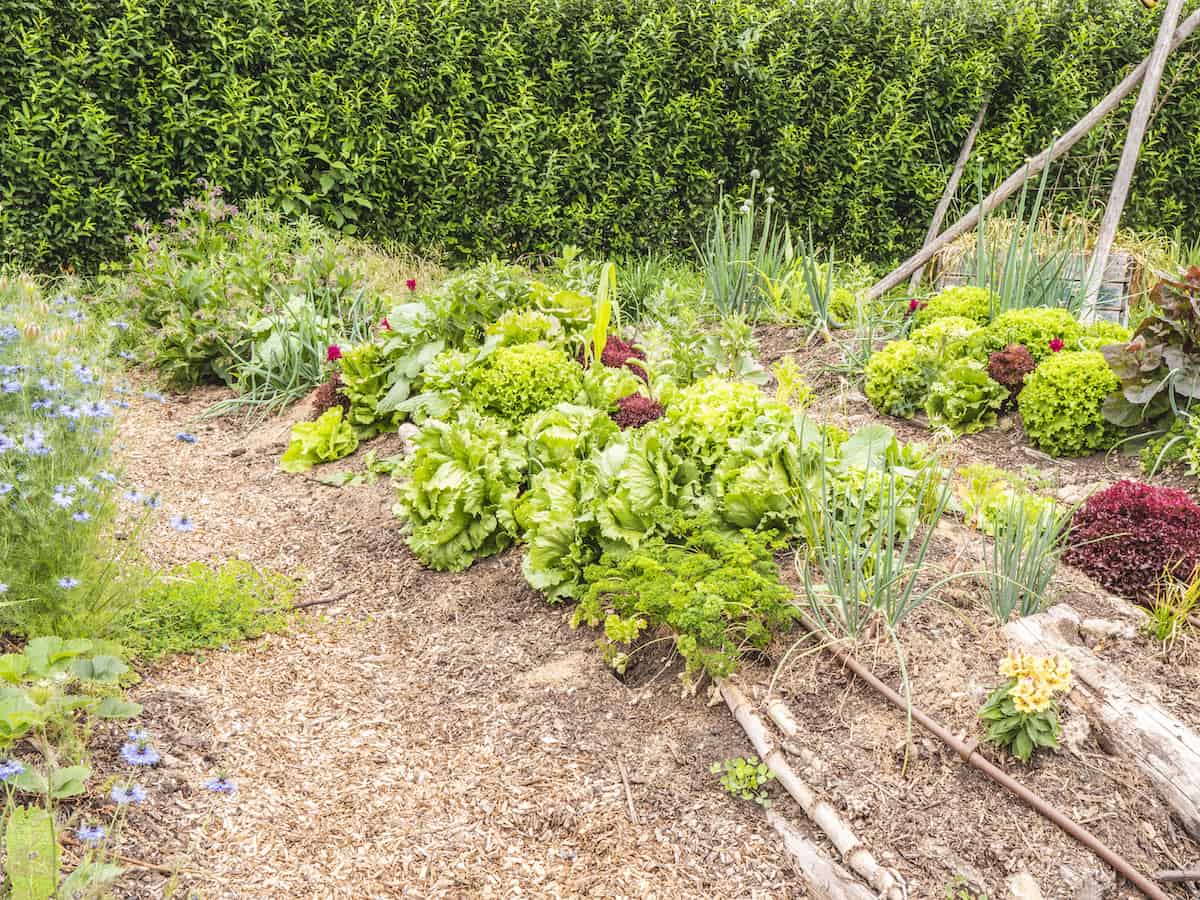
What is a no dig lasagna garden
So, how do you make a no dig lasagna garden? Well, instead of digging a garden, you build one on top of the ground by creating layers.
What are those layers? Well, leaves, grass clippings, compost, dirt etc. that you layer on top of newspaper or cardboard. It’s a great way to help cardboard decompose.
Then, you let the whole thing sit for a season. Yeah, that involves some planning ahead. However, after a few months, you’ll have a great garden with amazing dirt.
You can do this method, called sheet mulching, in fall for a spring garden. Or, you can do sheet mulching in spring to plant in fall.
Truth is, fall is probably better since one of the key ingredients is fallen leaves. And when are you most likely to have an abundance of leaves? In fall. Or, during a drought. But you get the point.
How to start a no dig garden
I was intrigued, because this sounded relatively easy. Also, I have been making compost for over a year but haven’t been able to do anything with it. This seemed like the perfect opportunity.
Just to be sure I didn’t end up making a mess of my yard, first I did some additional research on the lasagna garden.
Here’s what I learned: basically, you’re building up your own garden by using things you already own. You want to do this in a spot that gets a decent amount of sun to help with decomposition.
Supplies for lasagna gardening
Save this article and we’ll send it to your inbox. Plus, we’ll send you more great links each week.
Here’s what you’ll need to get your lasagna garden started:
* newspapers or flattened sheets of cardboard
* leaves or grass clippings
* compost material, like coffee grounds
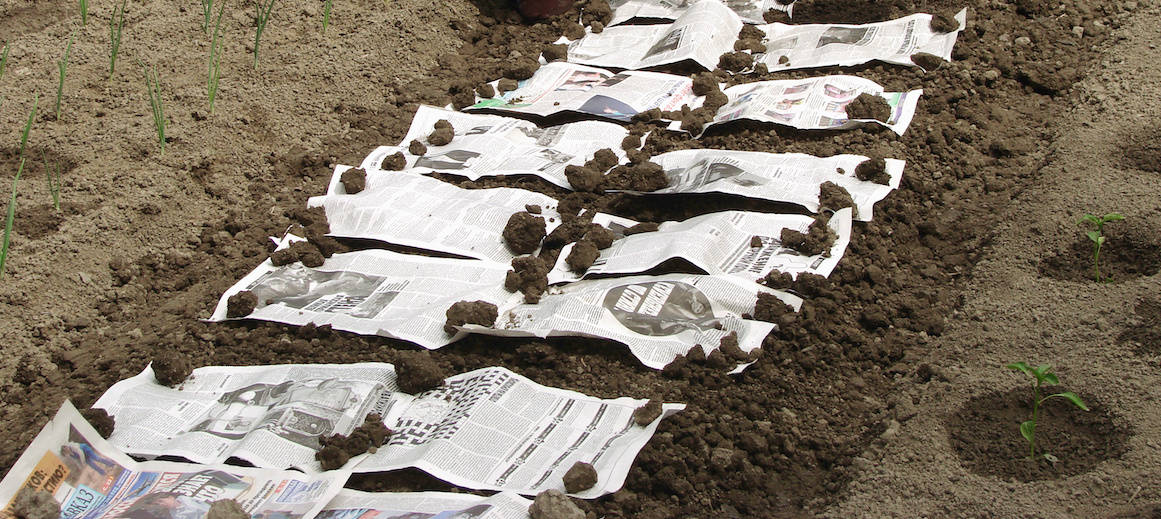
Steps for sheet mulching
One, you should lay down a layer of newspaper. You’re doing this to choke out any grass or weeds below it.
To ensure you’ve got enough coverage, put two to three sheets of newspaper down, one on top of the other. Then, wet it.
The wet newspaper won’t be as likely to blow away–helpful if you attempt some lasagna gardening on a breezy day like I did.
Also, it helps to start the “break down” process of the newspaper on the stuff underneath. Newspaper is great for making compost, as it is one of the fastest elements to decompose.
Lay down a layer of leaves
Two, you’ll put down a layer of leaves on top of the newspaper. If you compost, you know that in order to get your organic matter to break down, you need to layer it brown, green, brown, green, etc.
The lasagna garden, which is really a composting garden, is no different. So the first layer of leaves is your first layer of brown.
You can use whatever kind of leaves you have in your yard. So, this could be pine needles or other leaves.
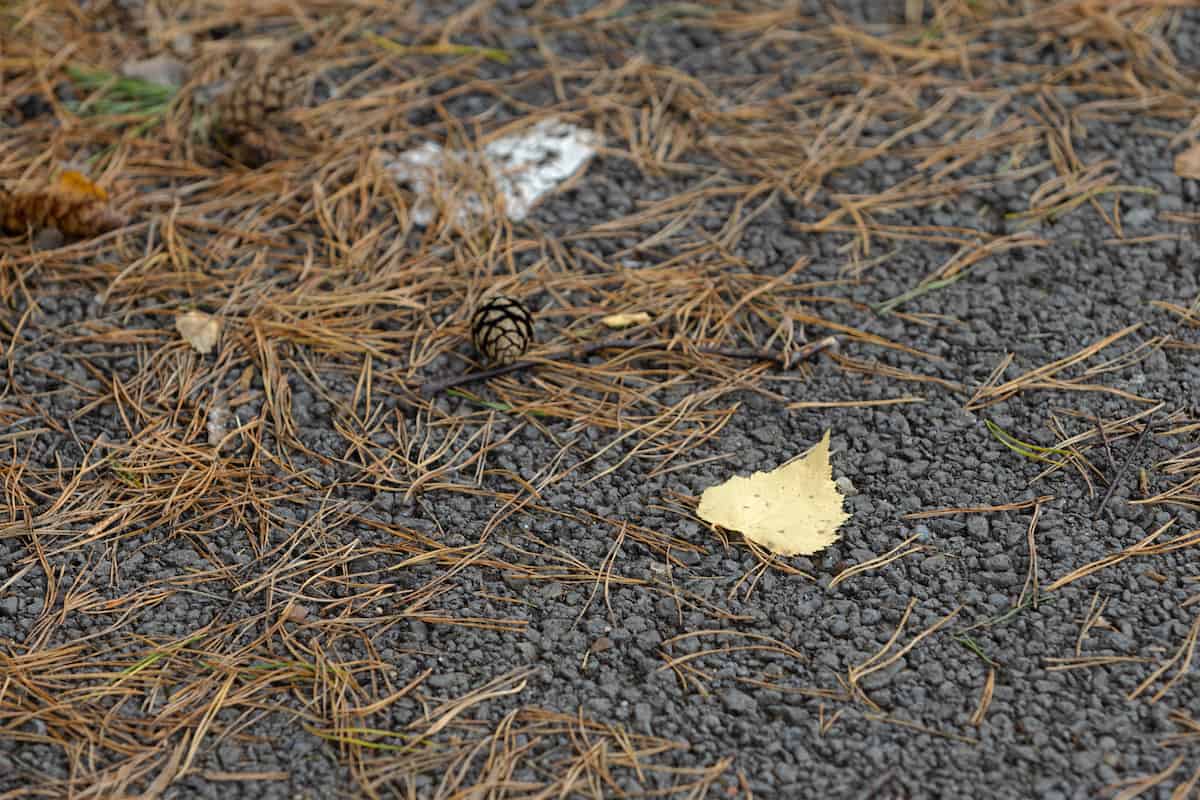
Now it’s time for compost
Three, your next layer in lasagna gardening is the “green” one. We call it green because it’s the active organic matter that you’ll be using.
So, in this instance, it was the right time to empty out my composting pin. It felt so satisfying using a pitchfork and seeing all the great compost I’d made over the past year from composting our food scraps.
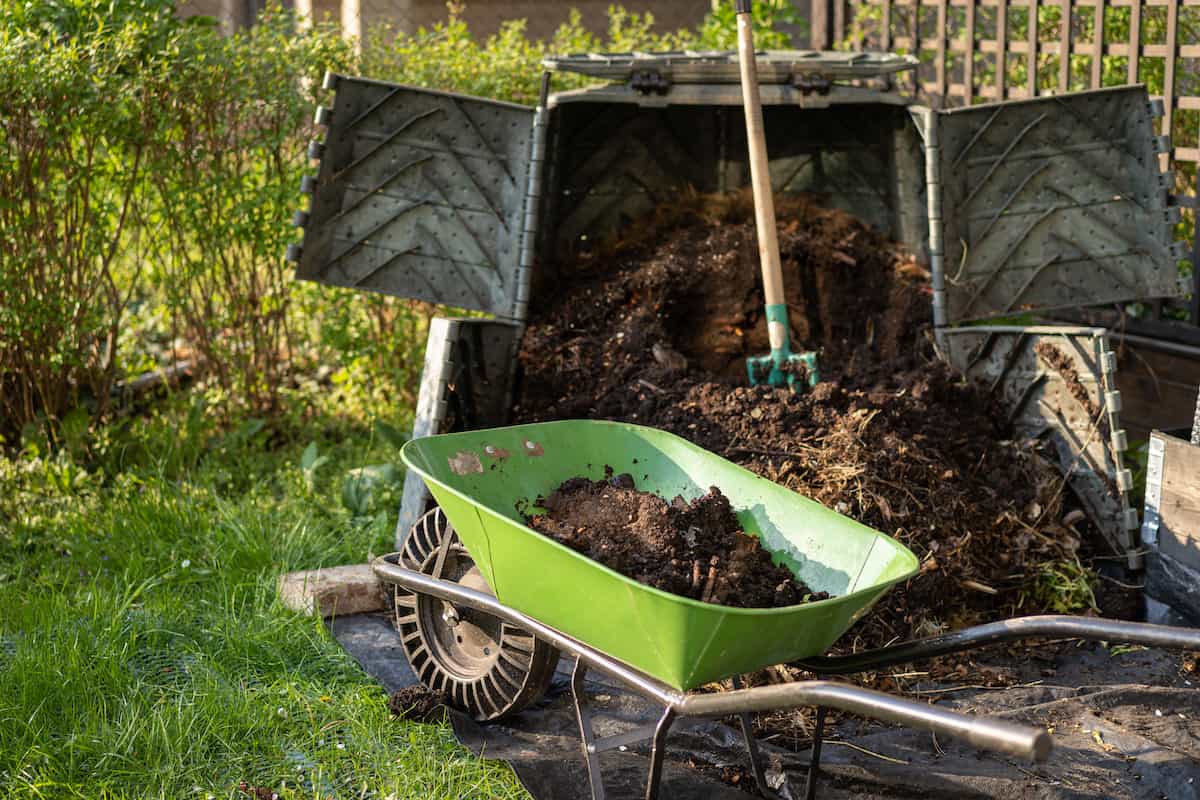
Then, I dumped the compost onto the leaves layer.
I must admit that it was a bit challenging spreading moist compost around on leaves. What made it challenging was the fact that the leaves tended to move with the compost.
However, I gutted it out. Then, in no time flat, I got the job done.
After that I did another layer of leaves for my “brown.” Thankfully, I’ve got a ton of trees on my property.
On the other hand, if you have a yard without a lot of trees, you can dump the clippings from your lawn mower as your brown layer–again, weird since the clippings are actually green.
FYI, you’re supposed to make your brown layer about twice as thick as the green layer. Oh and at this point? I was completely out of compost. I’ve got something like an 80-gallon compost bin, so this used up a lot of compost.
How big a lasagna garden should be
You can make your lasagna garden space as big as you want it to be. However, you should think about how high it ends up being.
Best practices for getting the best dirt next season say that you’re supposed to sheet mulch until it’s close to two-feet high when you’re done. Mine didn’t get quite that big.
When I was done, I stuck a yard stick in the pile. It showed me that I’d reached 16 inches tall. Sure, that’s not perfect, but it was good enough. And sometimes good enough is good enough.
Fast forward a season, and the lasagna garden was ready for planting. Check out how beautiful the dirt ended up being.
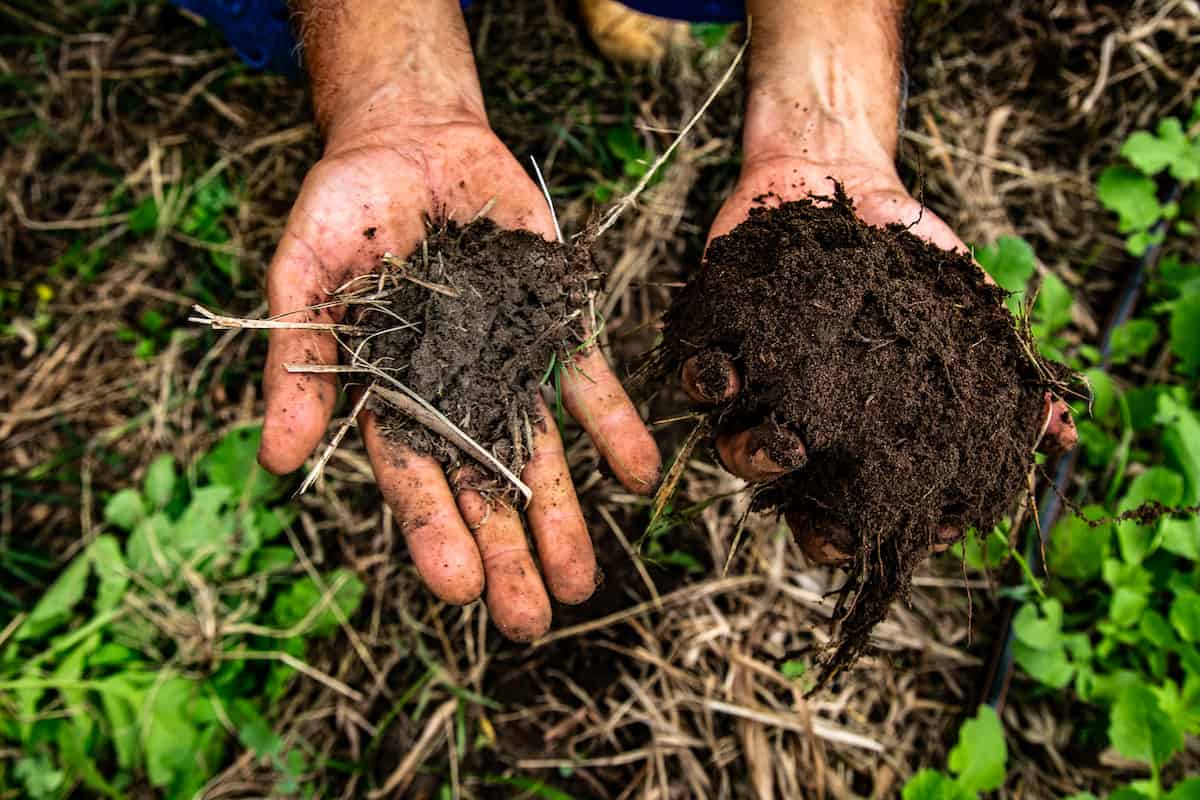
At this point, you’re ready to start planting whatever it is you hope to grow. Me? We used our lasagna garden to grow cucumbers, tomatoes, string beans and more.
Oh, and for kicks and giggles, we planted sunflowers. Check out how tall one of them got. My husband is six foot three for comparison’s sake.
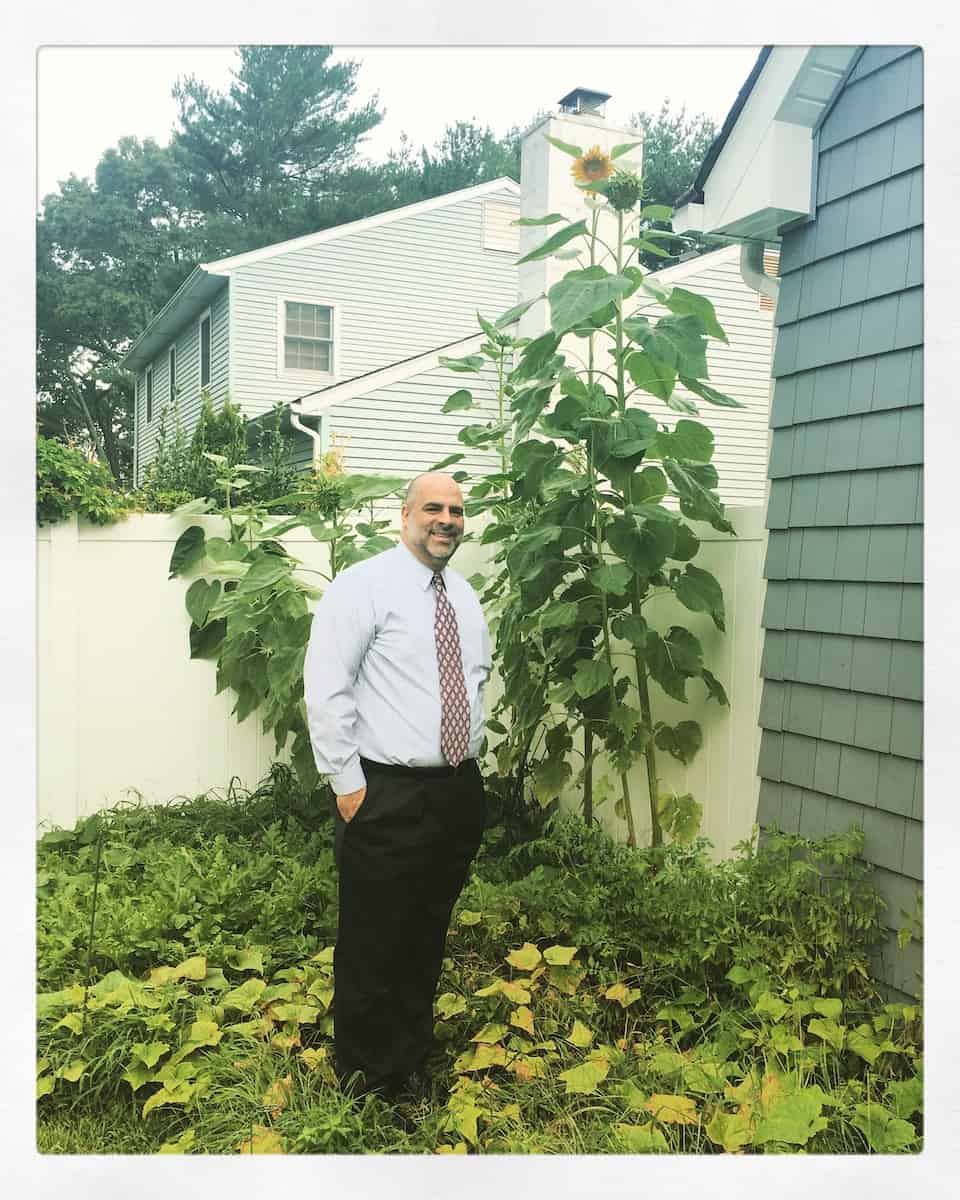
Finally, if you’ve got a successful lasagna garden going, it would be a great place to add your pumpkins after Halloween. If you’re lucky, you’ll grow new ones for next year.

There is an interesting aspect about lasagna gardening that many folks don’t realize, because their focus is only on their own yard. But some time, Google the words newspaper, cardboard, recycling and facts. Especially “facts”. Some homeowners may be surprised to see the numbers. Suppose several neighbors use 100 to 2000 pounds of cardboard or newspaper instead of recycling. What does that mean for the environment and resources if the same amount of new cardboard needs to be made brand new, because the same amount was not recycled? It might be food for thought about whether or not to lay the layers, or if the layers should be layed thinner. This was something I just learned more about this year.
Sounds great, Keri. Let us know how it goes.
Leah
This is the way I did all my beds when I lived in California. I just kept adding compost every year, it was amazing. Earthworms love this sort of garden. I used cardboard instead of newspaper since I had a free source for that.
regards,
Theresa
What a great idea!
I do organic gardening and this year I put a layer of newspaper down before doing organic compost and seeds / plants. What a difference – VERY little weeds to deal with throughout the season. YEA!
Question: with this layering you wrote about, does it compact down so that in the spring it’s pretty level or what? The idea of “stepping up” into the garden is interesting …
Thanks for the tip.
We did this last year when our yard was being dug up to remove the septic tank and install sewers, and we didn’t know where the construction work would be.
Check out our
"No dig garden" on our website.
As mentioned there, this method is similar to one promoted by Ruth Stout in the 1950’s in Organic Gardening magazine. If you can find a copy of her book, it’s fascinating reading.
We had great results and will be doing more of this next year as we reconfigure our garden plots.
A Bishops Wife:
Please include a link here to your blog. I would love to see what topic you’re covering in your blog.
I appreciate Mish’s linking to my blog this past weekend. It encouraged about 1,000 new people to take a look.
Thanks!
Leah
I’m so glad you gave this a try!
The nice thing about this type of gardening is that you don’t have to be precise in your brown/green ratios.
I recommend the book “Lasagna Gardening” by Patrician Lanza. (Probably available in your library.) In the book, she talks about how you can pretty much dump any organic matter onto your future garden and in any proportions.
I built a couple of gardens at my new house yesterday. I used dirt, manure, compost, and leaves. I wasn’t terribly precise in my ratios, but I also know that it won’t matter next spring.
I plan to add blueberry bushes next spring, so in the area where they’ll be, I’ll be adding in loads and loads of pine needles, as that helps increase the acidity of the soil, which blueberries love.
So now I’m ready to take my pumpkin seeds and “guts” over after Halloween and bury them in one of the new gardens. I’m also considering planting garlic soon so that I’ll plenty available to me next summer. I might also start transplanting some of my hearty herbs now so that I don’t have to do it when we move next spring.